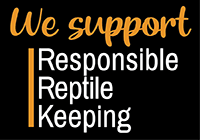How to Clean Plants Before Adding Them to Your Vivarium

How to Clean Plants Before Adding Them to Your Vivarium
Written by Mariah Healey, ReptiFiles
Live plants are one of the most important components of a bioactive setup. They play roles in the nitrogen, carbon, and water cycles, helping prevent toxic buildup of nitrogen, convert carbon dioxide into oxygen, and help maintain appropriate humidity levels. They provide cover for your pet, and sometimes also act as a source of food. And of course, plants are vital to creating a beautiful enclosure.
While we as herp keepers can be quite obsessive about the husbandry we provide to our pets, many of us make the mistake of underestimating or downright neglecting the plants that we use in our vivariums. This often leads to frustration for new bioactive keepers who, after planting and arranging the perfect vivarium, find that their plants are dying just 1-2 months later. In a worst-case scenario, the entire ecosystem may crash and you’ll be forced to start over.
One of the reasons behind a “bioactive crash” is not preparing the plants before they were placed in the enclosure. By thoroughly cleaning and quarantining plants prior to assembling your vivarium, you increase your likelihood of a successful long-term bioactive setup, as well as reduce the risk of your pet coming into contact with harmful chemicals and/or pathogens.
Here’s what you need to do:
- Buy from high-quality plant nurseries. This increases the likelihood that you will receive a healthy plant from the get-go. Sure, picking up a plant from Walmart or your local hardware store may be cheaper, but you also run the risk of that plant needing to be replaced later because it suddenly died for no apparent reason.
- Rinse the plant and its roots thoroughly. Do your best to remove as much of the “old” soil as possible, but be gentle about it — you don’t want to traumatize the plant, after all! It’s best to do this outdoors, so plan your vivarium build accordingly if you live in an area where freezing temperatures are the norm for part of the year. Take this time to clean and disinfect the plant’s pot, too.
- Repot the plant in new, clean, organic potting mix. If you’re still worried about pathogens in the soil, you can be extra careful and spread it on a baking sheet and “cook” it in your oven at 250°F for a couple of hours, or freeze it for a few days. Let the soil come to room temperature before using.
- Disinfect the plant. You can do this by mixing up a batch of 10% bleach solution (1 part bleach to 9 parts water) or 50% hydrogen peroxide solution (1 part 3% hydrogen peroxide to 1 part water). Spray the visible parts of the plant thoroughly with this mixture, getting into all the nooks and crannies, but reducing drippage into the soil. You may want to cover the soil for this part.
- Disinfect the roots. You will need to mix up a different batch of disinfectant for this: 1 part 35% hydrogen peroxide to 10 parts water. Soak the soil with the disinfectant, then allow things to dry out. When the first 2-3” of soil are dry, you can water the plant normally.
- Wait. For best results, let the plant rest for at least 1 month before placing it in your vivarium. Just as with reptiles and amphibians, plants need to be quarantined too! Keep it away from other plants in your house, but make sure it’s getting enough light and water. This is a good chance to observe the plant for any infections or pests that you may have missed — mealybugs, fungal infection, bacterial infection, aphids, mites, scale, thrips, whiteflies, etc. — and treat accordingly.
Cleaning your plants does not guarantee that they won’t die once you transfer them to your bioactive, but it does go a long way toward helping give them and your setup the best possible start. Plus, it’s an essential part of constructing a solid biosecurity strategy.
For best results, do plenty of research on the plants that you choose for your vivarium. Download a houseplant app like Vera, Planta, PictureThis, or Gardening Reference Guide (there are tons of others) to get familiar with each candidate’s needs and whether it would be compatible with your pet’s environment. If you have a reptile that likes lots of light, heat, and low humidity, then you’ll need plants that do well in those conditions. Alternatively, if you have an amphibian that prefers low light, low heat, and high humidity, then you’ll need to take that into consideration as well. And of course, don’t forget to use The Tortoise Table app to make sure that the plants you’re interested in aren’t potentially toxic to your pet.
- Josh Halter










